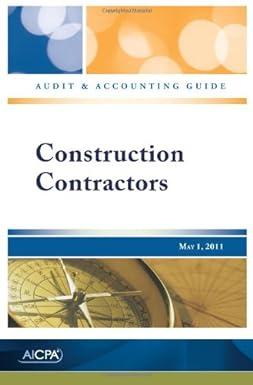Question
In this unit you will learn more about the front end of the operational process employed by the company. Specifically, you will learn how to
In this unit you will learn more about the front end of the operational process employed by the company. Specifically, you will learn how to manage suppliers who provide the raw materials used in the production of the companys textile products. Some challenges you will face are: 1) which suppliers provide the best quality raw materials; 2) which suppliers are the most reliable; and 3) which suppliers have the most competitive prices.
The simulation scenario will pose many opportunities for decision making and forecasting, and if you make a poor decision regarding suppliers it will impact the ability of Kibby and Strand to meet its contractual obligations, leading to dissatisfied customers. Since customer satisfaction weighs heavily on future contracts, you cant simply make the best decision for the moment, but rather the best decision for the long haul. This scenario provides a realistic illustration of the issues textile companies face across the U.S. Its extremely important that operations professionals have an above average comfortable level when it comes to establishing grounded assumptions and conducting and interpreting financial and operational forecasts. In its simplest form, forecasting is a process that represents an educated guess. In business, we use time series methods, the indicator approach, or regression analyses to forecast the nature of a situation or future values. The data we observe when forecasting fall into one of four types: trended patterns, seasonal patterns, cyclical patterns, or irregular patterns (Kros & Brown, 2013). Forecasting models are used to predict consumer demand, which, in turn, aids management in forecasting staffing requirements. In addition, to demand forecasts, management routinely engages in financial forecasting, which includes, but is not limited to: sales growth, economic predictions, and forecast future cash flows. In order to perform forecasts, its important that the management team signoff on the underlying assumptions used to complete these analyses, such as population growth and technology development. The following represents the typical steps one undertakes when preparing for and conducting a forecast (Investopedia, n.d.):
A problem or data point is chosen. This can be something like "will people buy a high-end coffee maker?" or "what will our sales be in March next year?"
Theoretical variables and an ideal data set are chosen. This is where the forecaster identifies the relevant variables that need to be considered and decides how to collect the data.
Assumption time. To cut down the time and data needed to make a forecast, the forecaster makes some explicit assumptions to simplify the process.
A model is chosen. The forecaster picks the model that fits the data set, selected variables and assumptions.
Analysis. Using the model, the data is analyzed and a forecast made from the analysis.
Verification. The forecaster compares the forecast to what actually happens to tweak the process, identify problems or in the rare case of an absolutely accurate forecast, pat himself on the back.
the student is to consider him or herself to be the Receiving Department Manager of Kibby and Strand, the company in the scenario.
Formulate an impact study for the COO on how the Receiving Department affects forecasting of production. Things to consider, but not limited to are: 1) how a shortage of raw materials might affect decision making with regards to production operations; and 2) the effect of raw material quality on production.
Step by Step Solution
There are 3 Steps involved in it
Step: 1

Get Instant Access to Expert-Tailored Solutions
See step-by-step solutions with expert insights and AI powered tools for academic success
Step: 2

Step: 3

Ace Your Homework with AI
Get the answers you need in no time with our AI-driven, step-by-step assistance
Get Started


